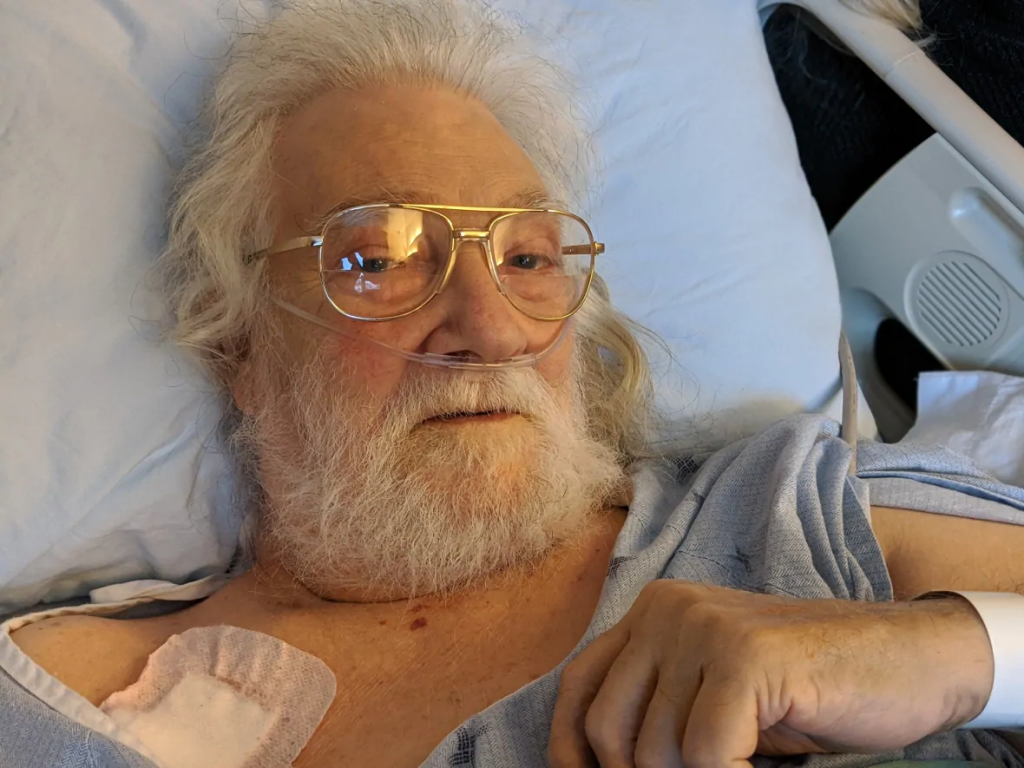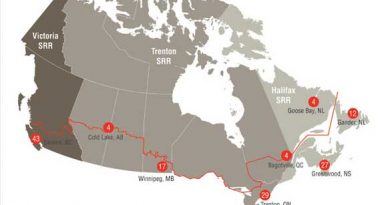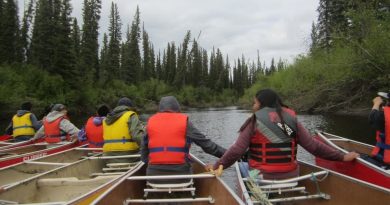Arctic Canada: why on-site hemodialysis is available in N.W.T. but not Yukon health centres

Yukon needs more than 50 people requiring hemodialysis to warrant offering the treatment at a health facility, according to the territory’s Health Department.
In the Northwest Territories, there are two sites providing hemodialysis, serving 23 people in total.
It’s a contrast to the available services in Yukon, where a man died earlier this month after denying hemodialysis treatment in the South.
Hemodialysis is used by some people with chronic kidney disease as a way of filtering their blood, something 74-year-old Terry Coventry needed in order to live.
It was available to him in Vancouver, but Coventry said he didn’t want to live away from his loved ones in Whitehorse, his home city.
After getting treatment for a time in Vancouver, he moved back to Whitehorse last December, knowing that he would die without the treatment.
Coventry told reporters at his bedside that he wanted his death to serve as a message to the Yukon government — a call to offer the treatment.
He died on Jan. 3. His sister, Kelly Coventry, said she plans to continue bringing attention to that parting request.
Marguerite Fenske is the acting director of Insured Health and Hearing Services in the Yukon government’s Department of Health and Social Services.
“We’re constantly exploring the best services to offer here,” she said.

Not enough need in Yukon
Fenske said the only hemodialysis offered by the department is home hemodialysis, usually done three times a week, and it’s only for people considered to be medically stable.
Usually a family member and the patient need to be trained on how to use the equipment, she said.
The B.C. Renal Agency provides all of the equipment, services, and training for home hemodialysis in Yukon, and the Yukon government pays for that.
Fenske said “to ensure privacy,” she is only allowed to say that fewer than five people get home hemodialysis in the territory.
Between the fiscal years of 2013 and 2019, she said the government is aware of fewer than 10 people who’ve left Yukon while needing hemodialysis.
The territorial government would cover flight costs for getting hemodialysis outside of Yukon three times a week, if a physician recommended it, Fenske said.
“Most people wouldn’t travel back and forth. It would be really hard on a person getting hemodialysis,” she said.
To warrant a site for hemodialysis, there needs to be about 60 to 65 people requiring hemodialysis in Yukon, Fenske said, adding that that’s based on guidance from the B.C. Renal Agency.
“It’s usually a population base of about 85,000 people and, normally, it’s about a four-to-six station unit,” she said.
“We do really understand and sympathize with people who have to leave the territory to receive treatment, and that does come into play when reviewing services.”
To provide quality care and ensure they still don’t have to travel elsewhere for care, including for other or related health issues, hemodialysis patients need “wrap-around services,” including those provided by dietitians, nephrologists, nephrology social workers, specially-trained nurses, pharmacists, and vascular surgeons, Fenske said.
She also said it’s important for there to be enough patients with hemodialysis so that nurses keep their skills up to date.
“Yukon does not have the resources to set up such a comprehensive program in-territory,” Yukon Health Department spokesperson Pat Living said in an email.
Bringing patients ‘closer to home’
Sheryl Courtoreille is the director of Territorial Health Services for the Northwest Territories government’s Health and Social Services Department.
She said there are two sites in the territory that provide hemodialysis.
The first one opened in Yellowknife in 1996. It can accommodate 30 people for three treatments each a week, and there is room for 15 more people.
In 2007, a site opened in Hay River with two machines. It now has four machines and can accommodate eight people for three treatments a week each. At the moment, there are no free spots available.
Two nurses can provide hemodialysis to four clients at a time at either site.
Not every hemodialysis patient lives in the community it’s offered in, but “at least they’re in the North,” Courtoreille said, adding that they live in the territory.
The territory does not offer home hemodialysis, and there has not been any requests for it that she’s aware of, she said.
In the 1990s, there was an increase in chronic disease rates, among other health issues in the territory that can negatively impact kidneys, and the government noticed that people were travelling south to get treatment.
“We wanted to stop our clients from having to move down to Edmonton and be fully supported there. We wanted to bring them closer to home … to receive their care, to be supported with family and amongst the North where they have been living and they’ve been raised,” Courtoreille said.
Through a contract, Alberta Health Services provides, among other things, help with equipment, specialty training for nurses, and support from nurses and a nephrologist in Alberta, she said.
Also, the communities’ respective hospital foundations bought machines and other support, she said.
“It wasn’t just a government thing, it was kind of like a community-driven approach,” Courtoreille said.
Related stories from around the North:
Canada: Northern Canada: New health centre in Cape Dorset could hold those on suicide watch, inquest hears, CBC News
Finland: Cancer rates in Arctic Finland below average, YLE News
Russia: Mass vaccination against anthrax continues on Yamal Peninsula, The Independent Barents Observer
Sweden: Fewer people suffering strokes in Sweden, Radio Sweden
United States: Alaska TB rate dips but still among the U.S. highest, Alaska Public Media



